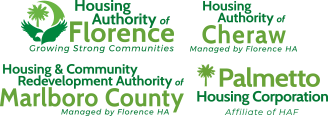Smoke-Free Public Housing Award
There are approximately 1.2 million households in the United States living in federally funded public housing. Of those, around 40% have children in the household, and nearly 50% of families live in public housing for 5 years or more. The health disparities and burden of chronic disease for those who live in public housing is well documented, and one of the most concerning examples can be seen in tobacco use: nearly 34% of adults living in public housing smoke, compared to about 14% of the general adult population in the United States, and the smoking rate is particularly high (37.5%) among adults receiving HUD assistance with children in the home.
In an effort to create healthier public housing communities, the U.S. Department of Housing and Urban Development (HUD) implemented a smoke-free rule in all federally funded public housing communities in July 2018. In support of the smoke-free rule, public housing residents must have full access to a range of tobacco cessation services from front-line healthcare providers, public housing staff, and quitlines to increase successful quit attempts. The healthcare, housing, and public health sectors must provide well-coordinated and comprehensive cessation services to maximize the public health benefits of the smoke-free rule for public housing residents.


 Translate
Translate  Web Accessibility
Web Accessibility 
